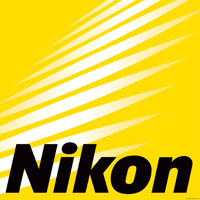
Imaging useful resource founder and publisher Dave Etchells became fortunate to be able to sit down down these days with a number of senior executives from the Imaging enterprise Unit at Nikon Corp., which is chargeable for producing the business's cameras and lenses. reachable to answer Dave's questions had been Tetsuya Yamamoto, corporate vp and Sector manager, construction Sector; Hiroyuki Ikegami, branch supervisor, advertising and marketing branch, advertising Sector; Naoki Kitaoka, community manager, advertising and marketing community 1, advertising department, advertising and marketing Sector; and Masahiko Inoue, neighborhood supervisor, advertising community 2, marketing department, advertising Sector.
subject matters for discussion covered the intent in the back of the design of the section-detection autofocus systems used within the business's DSLRs -- together with the advances made within the fresh Nikon D5 and D500 in this area -- as well as extra perception into the business's OPTIA lens measurement and design equipment, and the company's new DL-sequence cameras, its first fixed-lens models based mostly around the more and more-regularly occurring 1-inch sensor measurement. Questions were basically answered by Yamamoto-san, however with contributions from the different gents at quite a few elements in the interview. Given the difficulty of noting the respondents with certainty while transcribing the interview, all answers have simply been attributed to Nikon all the way through.
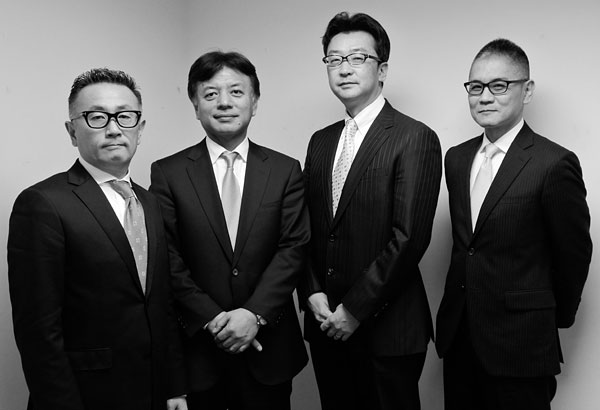
Masahiko Inoue, Tetsuya Yamamoto, Hiroyuki Ikegami and Naoki Kitaoka of Nikon Corp. (L to R)
Dave Etchells/Imaging aid: As is usually the case, the D5 and D500 share a typical AF system. This gives well-nigh finished frame coverage on the D500, however significantly much less on the entire-body D5. i might suppose that seasoned shooters would greatly admire broader AF coverage, but no SLR brand offers it. Is it effectively a depend of economies of scale that outcomes in shared AF systems like this, or are there other, extra primary factors for now not having dedicated full-body AF programs that cowl extra of the frame enviornment?
Nikon: No, actually, it isn't about scale or economy. We actually consider that it is most reliable for every digicam. (each and every capability the Nikon D5 and D500.) firstly, optically, the lens mount is the same for both the D500 and D5, for the AF coverage area. So once we feel concerning the maximum AF enviornment, the mount constitution definitely determines the vertical and horizontal insurance of the AF equipment. during this condition, DX is using the middle of the total mount, so it is why there may be full coverage as you pointed out. and that's why we give the function in the D5, the place we can use the entire AF area in a DX crop. Of direction, the lens' container of view will range, however it is for the clients to choose and modify.
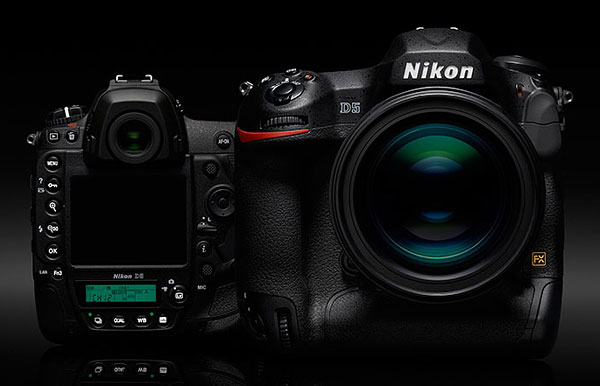
The professional-grade Nikon D5 (proven) shares a new autofocus device with the enthusiast-pleasant D500.
DE: So the box of view of the lens will affect the angle of the incident rays on the sensor. sure.
Nikon: but the AF insurance has been enhanced versus D4.
DE: what percentage greater, how an awful lot wider?
Nikon: Thirty %.
DE: Oh. Yeah, large. it is lots. I've not paid satisfactory consideration; i am too busy flying to Japan and every thing.
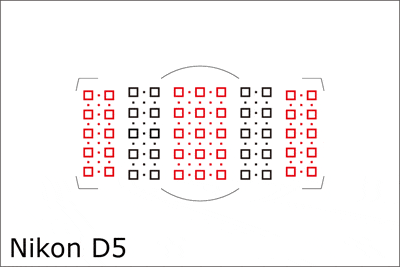
Nikon: Me too. <laughter>
[Ed. Note: Another "aha" moment for me in an interview. I knew that phase-detect AF required light rays striking the sensor from a minimum range of angles; that's why PDAF doesn't work at small lens apertures. I'd never connected the dots, though, to realize that the geometry of the lens mount itself would restrict the possible angles of incidence, as you get towards the edges of the frame. It makes complete sense, once you think about it.]
DE: okay. So extra on autofocus, about cross-classification AF aspects. It appears that some of the large breakthroughs within the Multi-CAM 20k AF sensor is the huge raise in the number of pass-class AF facets. ninety nine features are cross-class, up from best 15 within the Multi-CAM 3500. What has been the hindrance during the past to offering more move-type features, and how became it overcome within the new sensor?
Nikon: smartly, the big, dramatic advancements this time are in reality two elements. One is that we changed the AF sensor -- it's new. And the different factor is that we have a DSP (digital sign processor), a new circuit, in order that we are able to do high-pace processing after we increased the number of aspects.
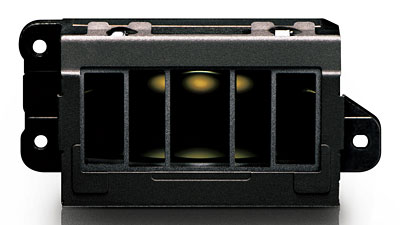
The Multi-CAM 20k autofocus module debuts in the D5 and D500.
DE: So the obstacle within the total variety of facets became simply DSP pace?
Nikon: Oh, and the older sensor too. both.
DE: Yeah, so a brand new sensor and additionally... but you could not have used this sensor with so many elements with the historic DSP.
Nikon: We did not actually have a DSP during the past.
DE: Oh, in fact? Wow, so it was just a standard CPU doing the AF earlier than. That ought to be an enormous raise in skill![Ed. Note: This was interesting; I'd never known what the hangup was to having more AF points. If I'd thought about it at all, I probably would have said that there was some limitation in fabricating the AF sensor. Lo and behold, it comes down to processing power. Depending on how many pixels are involved in each point, I can see that it could indeed take quite a bit of processing to run the correlation algorithm for each.]
Nikon: should you go back and suppose about the purpose of expanding the number of AF points, what we'd be doing this for, it be actually because we wish to trap moving subjects stronger with greater pace. but when it be executed at better velocity, the quantity of light gathered by means of the AF sensor becomes smaller, because it is operating sooner. To offset that, we now have a new replicate box constitution. additionally, the shutter has been more advantageous as well so that we will collect gentle more within a shorter time body.
DE: So the sooner mirror simply raises the exposure time of the AF sensor.
Nikon: yes.
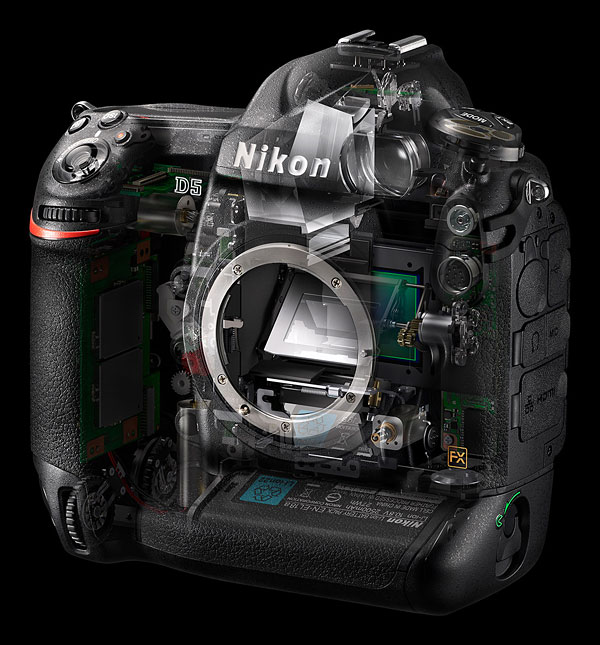
The Nikon D5 has a brand new reflect container design which allows greater autofocus optics.
DE: additionally, a new replicate container design lets you get more light, since you can have higher optics on the AF array.
[Ed. Note: Once again, very interesting. As users, we want viewfinder blackout to be as short as possible, to help track moving subjects, especially in continuous shooting mode. It turns out it's equally important for the camera's AF system, because the AF sensor only gets to "see" the subject when you do. (That is, when the mirror is fully in its down position). The faster the mirror and the shorter the blackout time, the longer the AF sensor has to collect light, so the more sensitive it can be. The other aspect, that I only touched on in my comment above, is that the redesigned mirror box makes room for larger AF-sensor optics, again improving light collection.]
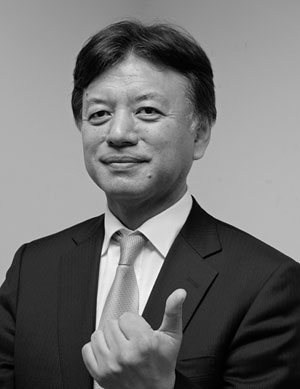
Tetsuya YamamotoCorporate Vice PresidentSector ManagerDevelopment SectorImaging business UnitNikon organization
DE: prior to now it seemed there became always a predicament in how many cross-type features. become that issue just a further example of a dilemma within the total variety of AF facets you could address? Or is there anything in regards to the cross-category elements and the design of the sensor that made it problematic to have greater move-type?
Nikon: the entire number of features would be the greatest reason. We even have to increase the autofocus algorithm as well because in the event you boost the entire variety of autofocus facets, you increase the likelihood of misguided center of attention readings as well. And that additionally needs to be adjusted.
DE: Ah, extra elements after which greater likelihood of error. sure.
Nikon: What the more suitable algorithm basically does is, it appears at now not just one factor or multiple features, nonetheless it looks at the total area to modify the core in order that we have an accurate focal point. We call this the auto-enviornment. In other phrases, when you seize a subject which is moving, you proceed to music it. It doesn't let go immediately.
DE: So with the very enormous variety of facets now, you create just about a depth map of the field. Then which you could locate the define of where the field is.
Nikon: yes. it's like a collective depth map.
DE: So, for every autofocus cycle, do you seem at the depth map of the whole area?
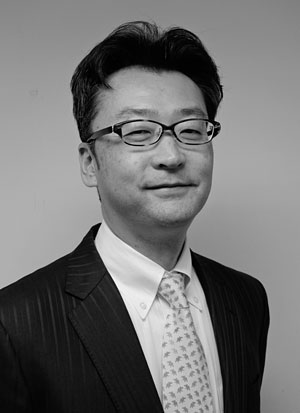
Hiroyuki IkegamiDepartment ManagerMarketing DepartmentMarketing SectorImaging enterprise UnitNikon supplier
Nikon: sure, you make one, after which you proceed to revise it. So sure, it does examine it every time.
DE: The entire area each time. Wow.
Nikon: That is simply completed by means of having 153 aspects, the brand new DSP, and the algorithm collectively.
DE: yes. an immense volume of processing, now not most effective to create the depth map however then to do object attention and boundary calculation on that.
Nikon: sure.[Ed. notice: ok, here's really charming! (i know, you are probably uninterested in me asserting "here is wonderful" every few sentences, however this time I mean it! ;-) First, the leading reason behind so few pass-type points in the past has conveniently been that producers have been limited within the complete variety of AF features the processors might handle. Given the option between expanding the number of horizontal-most effective facets -- which labored lots of the time -- or making extra pass-classification facets that would work all of the time (when it comes to vertical vs horizontal area element), they commonly opted to have greater non-cross-type elements, overlaying a bigger area, or the identical enviornment with improved lateral decision. This makes sense to me. i'd always assumed that there changed into something particular in regards to the vertically-oriented AF aspects that made them greater problematic to implement, however seems it became just a pr imary engineering trade-off decision of how to allocate the volume of AF processing attainable.
The 2nd interesting half right here is simply how subtle the new AF system is. With so many facets, the system can really create a "depth map" of the photograph at pretty high resolution (as a minimum when it comes to AF methods), letting it see the discipline as a set of objects at a number of distances, in place of simply distance statistics for just a few a little remoted facets. This *should still* significantly help AF area monitoring, as a result of subjects will appear as blobs of points more or less at the equal distance from the camera relocating around the frame. depending on simply how speedy the AF processor is and the way good Nikon's algorithms are, they can identify the boundaries of objects, figure out the place the approximate core or other aspect of most important distance counsel is discovered, and observe objects as they circulate across the frame, recognizing them as objects, as opposed to only a field of discrete aspects. Of course, the satan is within the de tails, and easily having the records purchasable does not imply that the processor and AF algorithms are going to be able to track subjects reliably. on the other hand, Nikon has a long time of event with AF algorithms, so i am very positive about what this can mean for the D5 and D500's AF monitoring potential.]

Naoki KitaokaGroup ManagerMarketing group 1Marketing DepartmentMarketing SectorImaging business UnitNikon company
DE: Nikon has had pretty excessive decision RGB sensors for publicity choice for a while now, and has used them to first rate expertise to aid the AF system music topics. [Ed. Note: They've used RGB exposure sensor data to help identify objects on the frame, helping to compensate for the relatively low "resolution" of the AF system's depth information.] Has the dramatic increase in AF features led to any giant adjustments within the interaction between the RGB and AF sensors? Or is it more an incremental refinement?
Nikon: The methodology is an identical, however the efficiency interplay between the RGB and the AF sensors have more desirable dramatically. in an effort to analyze the AF, the sensor really looks at numerous counsel together with the colour and face awareness, and comprehensively calculates every thing.
DE: And so now that you've an improved resolution depth map, you could make a far better suit with the RGB tips.
Nikon: sure.[Ed. Note: I mentioned above that the AF system could better identify the center of a subject, or "other point of most important distance information." This is what I was thinking of. The RGB exposure sensor has for some time been able to perform a certain level of face detection, but now that information is much refined, by its ability to associate a point cloud in the AF sensor's depth map with what the RGB sensor thinks is a face.]
DE: after I interviewed Gokyu-san and Yamamoto-san at CES, i spotted once we had been transcribing the interview that i was uncertain on a couple of elements about autofocus. We have been talking about part-discover versus contrast-become aware of in hybrid AF, and Gokyu-san said: "inspite of which direction we take, we understand that the important thing element which turns into critical is the depth of focus. So we're engaged on both technologies, sensor section detection and also the contrast autofocus plus alpha.' So then two questions. Did his reference to depth of center of attention seek advice from focal point precision, or accuracy?
Of path now we now have... Gokyu-san pointed out whatever, we transcribed it, and then I describe it again to you, after which ask Yamamoto-san what Gokyu-san in fact observed. <laughter>
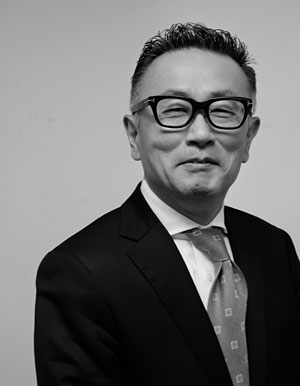
Masahiko InoueGroup ManagerMarketing group 2Marketing DepartmentMarketing SectorImaging business UnitNikon service provider
Nikon: He did mention the depth, now not accuracy.
DE: The depth of focus.
Nikon: however to renowned the depth, to recognize the depth.
DE: k. So maybe because we were speaking about part become aware of and contrast notice, and so he pointed out the key element was recognizing the depth of focal point.
Nikon: I think I referred to that.
DE: Oh, ok. My apologies.
Nikon: might be, because Gokyu-san would in no way say that, he is a marketing man.
DE: Oh, sure. I make an apology. When our editors are transcribing, they can not at all times tell which grownup turned into talking. Anyway, they just hear Miho-san speakme in English (Nikon's striking translator). Then the contrast autofocus plus alpha; i ponder if we misheard the word. Did you say alpha, or might be it become some other note?
Nikon: I stated that, yes.
DE: You spoke of that. So contrast plus alpha; what does the alpha mean?
Nikon: In distinction AF, you don't know the direction.
DE: Ah! good enough, so So alpha refers to course.
Nikon: sure, it's a technique.
DE: Ah, it is good. I just did not understand what alpha noted, so thanks!
moving on to lenses, closing year we noticed a flood of recent Nikkor lens announcements. I counted at the least seven, but probably I neglected one or two. The previous two years had been pretty sparse. What accounted for the unexpected increase of exercise, with so many lenses announced so rapidly after such a relatively gradual length earlier than? Did Nikon enhance the number of lens designers, or did the OPTIA wavefront-based lens design gadget account for the change?
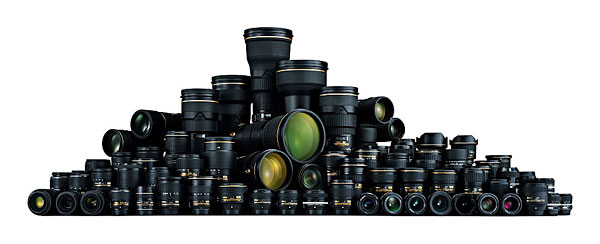
Nikon's good selection of Nikkor lenses has grown vastly over the remaining 12 months.
Nikon: it's not like we had a unique program to speed up the launch final year, it be not like we added a selected structure, or a new device, or anything else like that. We had been simply putting together a launch plan, simply according to the market trends and customer wants, and we went along with them. The pace is dependent upon the market. Then when anything dramatically improves, like performance or anything like that, might be a new series of lenses launch one after yet another. That may well be the case.
DE: This can also sound funny, however I bet i'm wondering in years in the event you do not announce seven lenses, what are all of the lens designers doing? <commonplace laughter within the room>
Nikon: Oh, they do not have any idle time at all, agree with me.
DE: So why, you recognize, two lenses, two lenses, then seven lenses?
Nikon: The engineering participants are all in full utilization, actually. they may be all the time busy working on the job of designing lenses. but you should keep in mind that the lead time of a lens differs through the issue of designing it. So every so often a lens can also be developed in 2 years, on occasion 3.5. Then that variety of coincides to the launch timing, which is not even.
DE: Wow, that is very long, from time to time 3.5 years!
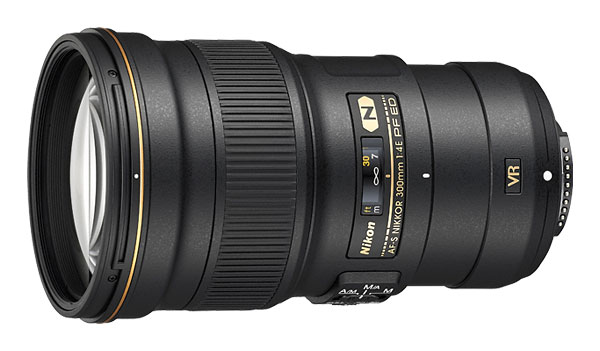
extra complicated lenses like the AF-S NIKKOR 300mm f/4E PF ED VR -- the realm's lightest full-frame 300mm lens -- can spend several years in development.
Nikon: Some very elaborate ones, sure. for example, section Fresnel. That became a new technology, so it took a lot of time.
DE: Ah, so it became simply a kind of coincidence that this became when they all got here out of the pipe at the same time.
This wasn't in my organized questions, but it makes me curious: When a lens takes longer, what's the method this is being executed? Is it a be counted of iterations, that you simply ought to are attempting whatever thing and then it would not work, so you are attempting anything else, it would not work, and so forth? what is it that takes greater time on problematic lenses?
Nikon: Optics design can be one. Designing the optics would take longer, for one. a lot of time is consumed in the simulation of what the structure should be. I mean, the simple constitution of how many lenses...
DE: how many features, yes.
Nikon: ...and then the focal size, and all that. truly, the commonplace of a lens is becoming greater and better, in comparison to common film cameras, because we now have greater pixels, and the decision is going up.
DE: So the design process is one in every of ... they will birth in some path and advance a preliminary design, see what the results are, and then they are going to exchange some things and check out it once again?
Nikon: when we do the manufacturing itself -- now not the mass production, but once we really design and make a digicam [or lens]-- the engineering half is in accordance with our plan. it be the simulation part the place we do loads of trial and mistake, which is finished on the desktop. however that's nonetheless additionally considered manufacturing, for us.
DE: It takes time to do a simulation, yes.
Nikon: The one which takes essentially the most amount of time is giving beginning to a new technology and the base R&D exercise, as Yamamoto-san outlined.
DE: Like section Frenel.
Nikon: as an instance, yes.
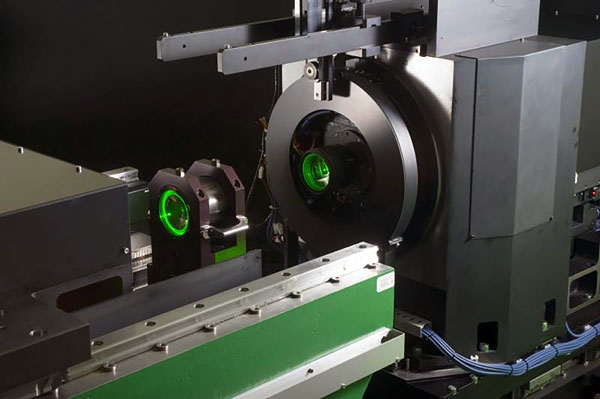
The Nikon Optia metrology system replaces the company's previous MTF measuring methods.
DE: The OPTIA equipment changed into introduced a while ago, however it never passed off to me to ask before; what changed into the first lens designed with it, or as a minimum the primary one that turned into introduced?
Nikon: or not it's complicated to recollect. fresh models are during OPTIA. really, or not it's a device that measures the entire facets within the lens. it's no longer definitely a device that we use to do the optical designing.
DE: Oh!
Nikon: It measures how the mild waves replicate or penetrate, and then we simulate the aggregate of the lens aspects, certainly. that's the designing part, however it truly is much less crucial to OPTIA. The answer to your query is, the contemporary ones are all achieved through OPTIA. OPTIA has changed the MTF measuring machine.
DE: Ah, yes, I see. so you had the ancient design application worked by means of ray tracing.
Nikon: actually sure.
DE: So OPTIA makes the measurements, characterizes the features, however now the design software is also distinct, to make the most of that suggestions within the simulation.
Nikon: yes. it's additionally new. So the OPTIA looks at each point, one by one, the diploma of bokeh and the aberrations. It appears on the light waves, truly. The design recreation is to mix the facets in the gold standard method.
DE: I referred to design, but I doubtless may still have referred to that the simulation software is changed.
Nikon: OPTIA is a device that allows us to acquire information for simulation. there may be something that the ray hint can under no circumstances do, and that is to peer how the bokeh is for one lens, as a result of we want some form of a very tasteful lens as a component within the entire aggregate. Ray trace could certainly not accomplish that.[Ed. notice: one other mystery clarified. i'd heard about Nikon's OPTIA device a couple of years ago, however failed to definitely take into account what it became. The publicly-attainable information spoke of "wavefront modeling" or some such. From this, I had the influence that it become primarily a brand new simulation approach, some choice to the ray-tracing algorithms that had been time-honored in optical design. From Yamamoto-san's comments, notwithstanding, it looks that probably the most critical part of OPTIA is its measurement means, an skill to a great deal more fully characterize the individual lens facets than turned into in the past viable. This improved understanding of the particular person lens points then performs into greater superior simulation utility, but Yamamoto-san emphasized in his remarks that it changed into the size or optical characterization means that turned into probably the most colossal part of the advancement.
This changed into a new point of view on OPTIA for me, but I confess that I still do not remotely take note what or not it's all about. It seems to me that ray-tracing could in the end utterly assess the conduct of a lens, whether for in-focal point or out-of-focus situations. Ditto chromatic aberration, geometric distortion, and many others. in spite of everything, easy rays are refracted through a lens point in a really deterministic vogue, reckoning on where they may be originating from, whether in the airplane of center of attention or either in entrance of or in the back of it, and so forth. My experience, notwithstanding, is that representing the totality of a lens's optical conduct via ray-tracing (including bokeh consequences) would be extraordinarily laborious, or as a minimum insanely compute-intensive. most likely the key innovation with OPTIA is a means to represent a lens element's habits in a a lot more compact manner.
As stated, I suppose that there's still some basic piece missing in my understanding . The proven fact that Nikon refers to it as "wavefront aberration" measurement implies a very diverse dimension or coordinate area than widespread lens characterization. I guess deeper particulars will should wait except a time comes when i will interview the OPTIA gadget engineers themselves :-) meanwhile, it does sound like Nikon has a unique gadget that allows them to more effortlessly model bokeh, micro-distinction and different subtle characteristics of advanced lens programs.]
Promotional video for Nikon's DL-series cameras.
DE: adequate, i'll swap to the DL cameras now, to most likely let a person else answer and provides Yamamoto-san a relaxation. <laughter within the room>
We discover the brand new DL cameras very interesting. They represent an entirely new market phase for Nikon, and also you've entered it with a greater distinctive line than any of your competition. this present day, my sense is that companies tend to flow steadily when increasing product lines, however you jumped correct in with three very distinctive models within the identical standard market house. That looks like a daring circulate. What are you able to tell us about your strategy in releasing all three models at once?
Nikon: first of all, and you may have heard this within the press free up, the goal customer for the DL collection is the DSLR consumer. Our intent of launching this sequence changed into that we wanted to supply cameras for DSLR users with excessive performance, good lenses, and also decent portability, 24/7. in order to meet these a considerable number of wants, we knew that we had to provide various types of lenses, in a large assortment. So it truly is why we needed to launch three very diverse cameras, to cowl these numerous wants.
DE: at the low end, the DL 24-85 seems to be priced fairly aggressively. it's $200 below the Sony RX100 III, and $50 less than the Canon G7X II. These are each very strong products. currently, the long-established G7X and Sony RX100 III are the quantity two and quantity four cameras on our website. What was your strategy in attacking these fashions? What do you see as the DL 24-eighty five's key strengths?
Nikon: We consider you that it's very competitive out there as a result of two strengths. To reply your question, one key element is the lens efficiency, which we think is very respectable. The other is relocating topics. The DL24-eighty five captures them very neatly, with a burst capture rate of 20 frames per 2d, which is a spec that no different rival has.
DE: and that's the reason 20 FPS at full decision?
Nikon: yes.
DE: so that you view lens high-quality and high catch speed are both strengths, yes.
Nikon: And an extra, excuse me. The SnapBridge function.
DE: Ah, SnapBridge, yes, it really is very colossal. I haven't tried it yet, however I consider it's very vital. [Ed. Note: Snapbridge is Nikon's latest connectivity solution, intended to make it very easy to connect its cameras to smartphones, and share the images. My early impression is that it does indeed go a long ways towards making the integration between camera and phone seamless. As noted, though, I haven't played with it myself yet, so take that impression with the appropriate grain of salt.] The 18-50 is an ordinary entry. or not it's currently the widest-angle providing within the 1-inch compact category. With such a robust center of attention on vast angle, it be some thing of a different pastime digicam. What led you to take such a unique course from the relaxation of the container?
Promotional video for Nikon's SnapBridge graphic sharing functionality.
Nikon: We thought that this appeal aspect of getting huge attitude capacity become a vital one to nail, because many of the DSLR clients -- once more, it's our goal for that whole sequence -- are looking to carry round a digicam that has wide attitude the entire time, like 18mm.
DE: So definitely, the focal point on the DSLR person is what led you to the large angle?
Nikon: sure.
DE: Very pleasing. i am curious, what are your expectations for the 18-50 in relative extent, in comparison to the different fashions? How do you feel the extent could be allotted?
Nikon: This could be the ratio: if the quantity for here's one, two for this, and one for this. (He turned into gesturing to the cameras as he spoke. The ratio changed into 1x for the 18-50mm, 2x for the 24-85, and 1x for the 24-500mm version.)
DE: Ah, I see. it be entertaining to me that you are expecting the 18-50mm to be as customary because the 24-500mm. even so, i can very comfortably see that; that wide a number focal lengths with an aperture ranging from f/1.8-2.eight would be very attractive to lots of our readers! sadly, looking at my laptop, I see that we're definitely about out of time. thank you very tons for assembly with me!
Nikon(neighborhood): thank you!






0 komentar:
Post a Comment